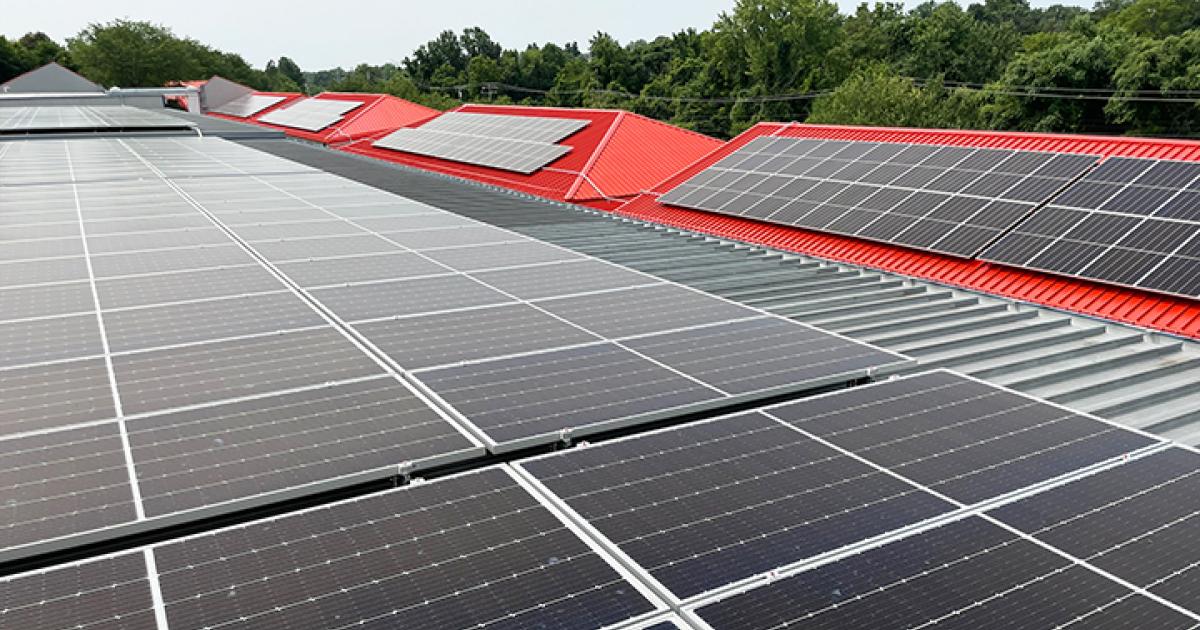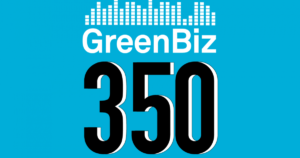
Public Storage, the largest owner of self-storage sites in the U.S., plans to host more than 130 community solar projects on its roofs in Illinois, Maryland and New Jersey.
The installations, which will take up roughly 8 million square feet of its rooftops, will add more than 87.5 megawatts of clean energy to local communities around the host buildings by the end of 2025 and connect to more than 10,000 homes.
Individual or commercial energy buyers will be able to “subscribe” — in some cases with discounted electricity rates — to a Public Storage solar installation without having to host panels on their own rooftop or property. Close to 60 of the installations will be in Maryland, for example, where they could help residents save an estimated $1 million off their energy bills annually. Public Storage gets compensated through a leasing arrangement.
Many neighborhoods where Public Storage is building the installations haven’t had access to renewable power. The company said the contract to build the installations, announced in August, is one of the largest deals of its kind with a specific focus on bringing renewables to low- and moderate-income (LMI) households.
The initiative is part of Public Storage’s bigger plan to install solar power on 1,000 self-storage buildings by 2025 — that’s more than one-third of the 2,877 facilities in its U.S. portfolio as of March. Many of those installations generate electricity for the company’s own consumption, but the community solar projects are focused more on adding clean power to local grids.
The social aspects of community solar programs dovetail neatly with the Public Storage corporate sustainability strategy, which is aligned with certain U.N. Sustainable Development Goals. In its 2023 sustainability report, the company said it has cut its carbon emissions, water use and waste production by an average of 20 percent across its storage properties over the past four years. As of that update, it had solar installed on 200 properties, with 423 more properties under contract.
While Public Storage declined to comment further on the details, the Glendale, California-based real estate investment trust described elements of its community solar strategy in a blog post. “This means underserved customers can benefit from renewable energy without the need to install solar panels on their property,” Public Storage said. “It also removes the barrier of costs associated [with] these projects.”
The big picture for community solar
The U.S. community solar market is forecast to grow by 118 percent over the next five years, reaching 30 gigawatts in total capacity by 2030, according to data from researcher Wood MacKenzie. Solar power accounted for more than 50 percent of additions to the U.S. electric grid in 2022 — a total of 20 gigawatts, of which about 1 gigawatt came from community solar projects, according to data from Solar Energy Industries Association.
The biggest community solar market is New York (with more than half the current U.S. community solar installations), but Massachusetts, Maine and Maryland have particularly strong programs and at least 20 states support the model, the data suggests. What’s more, federal incentives can aid with financing: The Inflation Reduction Act includes $7 billion in funding for community solar.
Taking advantage of its real estate
Mark Schottinger, president and chief legal officer of Solar Landscape, the developer of the Public Storage projects, said community solar is a compelling option for corporations with real estate holdings that have reasonably new roofs (an engineering assessment is a must) seeking to accelerate their support of renewable energy. “If you own real estate and want to make money, you should think about community solar,” he said.
So far, Solar Landscape, based in Asbury Park, New Jersey, has leased more than 30 million square feet of rooftops for similar work, although it did not disclose other customers.
Smaller projects get permitted faster
The average size of community solar projects coordinated by Solar Landscape is 1.5 megawatts, much smaller than ground-mounted (non-roof) solar projects that typically generate about 5 megawatts, Schottinger said. That smaller size represents less of a strain on local electric grids, while larger additions can require more extensive infrastructure upgrades, he said.
Solar Landscape says for that reason its projects are often up and running in less than a year, and the permitting process can be streamlined. Larger projects, by comparison, can take several years to be greenlighted and switched on, for a variety of regulatory and financial reasons. The bulk of the new Public Storage-hosted portfolio will be generating power by the end of 2024, Schottinger said.
Financial incentives for overlooked neighborhoods, too
Many states require community solar projects to consider environmental justice as part of site selection in order to qualify for financial incentives.
About half of the 41 projects planned for Illinois, for example, were approved under the community-driven community solar initiative within Illinois Shines, which considers benefits such as “community ownership or wealth-building, meaningful project involvement and engagement from community members.” In Maryland, about one-quarter of the 418 megawatts in community solar additions the state seeks to support with the Maryland Solar Pilot Program is designated for LMI communities. In New Jersey, at least half of the community solar projects approved in the state must serve overlooked neighborhoods.
Aside from adding power to local grids, the projects can bring jobs to these communities, Schottinger said. Solar Landscape supports a training initiative, STEP-UP (Solar Training and Education Partnership for Underserved Populations) to teach solar installation skills to those seeking employment on the projects. So far, it has trained more than 2,500 people in Illinois, Maryland, New Jersey and New Mexico.
- SEO Powered Content & PR Distribution. Get Amplified Today.
- PlatoData.Network Vertical Generative Ai. Empower Yourself. Access Here.
- PlatoAiStream. Web3 Intelligence. Knowledge Amplified. Access Here.
- PlatoESG. Carbon, CleanTech, Energy, Environment, Solar, Waste Management. Access Here.
- PlatoHealth. Biotech and Clinical Trials Intelligence. Access Here.
- Source: https://www.greenbiz.com/article/public-storage-backing-130-community-solar-projects-heres-why
- :has
- :is
- :not
- :where
- $1 million
- $UP
- 000
- 1
- 10
- 118
- 20
- 200
- 2022
- 2023
- 2024
- 2025
- 2030
- 30
- 41
- 50
- 500
- 60
- 8
- 87
- a
- Able
- About
- accelerate
- access
- According
- accounted
- across
- Act
- add
- adding
- additions
- ADvantage
- Aid
- aligned
- also
- Although
- an
- analysis
- and
- announced
- Annually
- approved
- ARE
- around
- arrangement
- article
- AS
- aspects
- assessment
- associated
- At
- AUGUST
- average
- average size
- backing
- barrier
- based
- BE
- benefit
- benefits
- Big
- Big Picture
- bigger
- Biggest
- Billion
- Bills
- Blog
- bring
- Bringing
- build
- Building
- but
- buyers
- by
- came
- CAN
- Capacity
- carbon
- carbon emissions
- cases
- certain
- chief
- clean energy
- Close
- comment
- commercial
- Communities
- community
- Community Driven
- company
- Company’s
- comparison
- compelling
- compensated
- Connect
- Consider
- considers
- consumption
- contract
- coordinated
- Corporate
- Corporations
- Costs
- could
- Current
- Customers
- Cut
- data
- Deals
- described
- designated
- details
- Developer
- Development
- DID
- Disclose
- Education
- Electric
- electricity
- elements
- Emissions
- employment
- end
- energy
- engagement
- Engineering
- environmental
- estate
- estimated
- Ether (ETH)
- example
- extensive
- facilities
- far
- Federal
- Feet
- financial
- financing
- five
- Focus
- focused
- For
- Forecast
- four
- from
- funding
- further
- generate
- generating
- get
- Goals
- great
- Grid
- Grow
- had
- Half
- Have
- having
- he
- help
- Holdings
- Homes
- host
- households
- HTML
- HTTPS
- if
- illinois
- in
- Incentives
- includes
- industries
- inflation
- Infrastructure
- Initiative
- install
- installation
- investment
- involvement
- IT
- ITS
- Jersey
- Jobs
- jpg
- Justice
- Kind
- landscape
- larger
- largest
- leasing
- least
- Legal
- less
- local
- Maine
- make
- make money
- many
- March
- Market
- Maryland
- massachusetts
- meaningful
- means
- Members
- Mexico
- million
- model
- money
- more
- much
- must
- Need
- New
- New Jersey
- New York
- Newsletter
- next
- node
- of
- off
- Officer
- often
- on
- ONE
- One-third
- Option
- or
- order
- Other
- over
- own
- owner
- ownership
- panels
- Park
- part
- particularly
- Partnership
- past
- People
- percent
- picture
- pilot
- plan
- planned
- plans
- plato
- Plato Data Intelligence
- PlatoData
- populations
- portfolio
- power
- president
- process
- Production
- Programs
- project
- projects
- properties
- property
- public
- qualify
- Rates
- reaching
- real
- real estate
- reason
- reasons
- reduction
- regulatory
- Renewable
- renewable energy
- Renewables
- report
- represents
- require
- researcher
- residents
- roughly
- running
- s
- Said
- Save
- says
- seeking
- Seeks
- selection
- serve
- several
- should
- sign
- similar
- site
- Sites
- Size
- skills
- smaller
- So
- so Far
- Social
- solar
- solar energy
- solar panels
- Solar Power
- some
- specific
- square
- State
- States
- storage
- Strategy
- streamlined
- strong
- subscribe
- such
- Suggests
- support
- Supports
- Sustainability
- sustainable
- Sustainable Development
- switched
- Take
- than
- that
- The
- The Projects
- The State
- their
- These
- they
- think
- this
- those
- Through
- to
- Total
- trained
- Training
- transition
- Trust
- typically
- u.s.
- under
- underserved
- Update
- upgrades
- use
- variety
- want
- Waste
- Water
- were
- which
- while
- why
- will
- with
- within
- without
- wood
- Work
- year
- years
- york
- you
- zephyrnet







